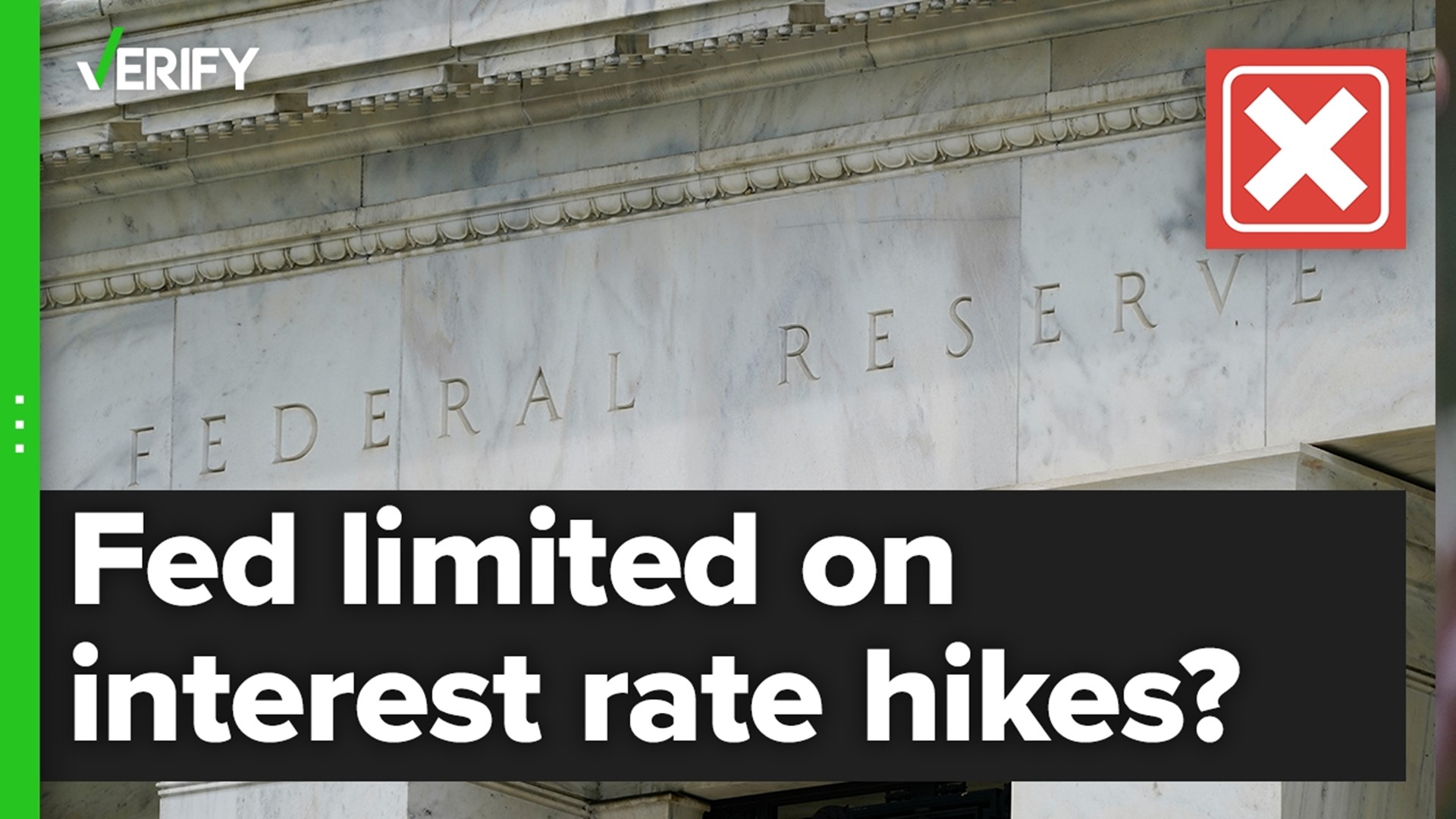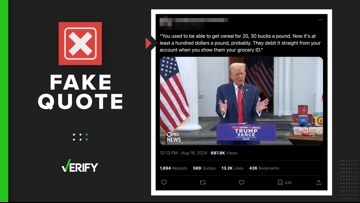In an effort to combat high inflation, the Federal Reserve raised its target interest rate by a quarter-point on Wednesday, March 22. The move brings the key interest rate to a range of 4.75% to 5%.
This marks the the ninth consecutive time that the United States' central bank has raised interest rates.
A VERIFY reader asked whether there’s a limit to how many times the Federal Reserve can raise interest rates in a year.
THE QUESTION
Is there a limit to how many times the Federal Reserve can adjust interest rates?
THE SOURCES
- The Federal Reserve Act
- Ed Knotek, senior vice president and associate research director at the Federal Reserve Bank of Cleveland
- Alan Gin, Ph.D., associate professor of economics at the University of San Diego’s Knauss School of Business
- David Wessel, director of the Hutchins Center on Fiscal and Monetary Policy at the Brookings Institution
THE ANSWER
No, there isn’t a limit to how many times the Federal Reserve can adjust interest rates.
WHAT WE FOUND
When people talk about the Fed adjusting interest rates, they are referring to the federal funds rate set by the Federal Open Market Committee (FOMC). Put simply, this is the interest rate that banks charge each other to borrow or lend money overnight.
Though this interest rate doesn’t directly impact the average American’s day-to-day purchases, adjustments to it affect everything from borrowing costs on car and home loans, to credit card purchases, according to Bankrate economy reporter Sarah Foster.
There isn’t a maximum number of times that the Federal Reserve, the United States’ central banking system, can change its benchmark interest rate within a year, according to Ed Knotek, senior vice president and associate research director at the Federal Reserve Bank of Cleveland.
That’s because the Fed is “charged with doing what it thinks is best to solve the problems facing the economy,” Alan Gin, an economics professor at the University of San Diego’s Knauss School of Business, told VERIFY.
“Therefore, there is no limit on how many times they can change interest rates or how much they could change them at one time,” he said.
The Fed is tasked through the Federal Reserve Act of 1913 to work toward the economic goals of maximum employment and price stability.
Price stability is defined by the Federal Reserve as an average inflation rate of 2%. Though there isn’t a formal way to measure maximum employment, which is sometimes called “full employment,” it can generally be defined as “the highest level of employment the economy can sustain without generating unwelcome inflation,” experts with the Brookings Institution explain.
The law gives the Federal Reserve “substantial flexibility,” David Wessel, director of the Brookings Institution’s Hutchins Center on Fiscal and Monetary Policy, said. The reasoning behind this is that the Fed can respond quickly to economic changes, such as the stock market crash of 1987, the economic crisis of 2007-2009 and the COVID-19 pandemic, he added.
The FOMC meets eight times during a typical year. But it can make changes to the Fed’s benchmark interest rate outside of these meetings as well, which happened most recently in March 2020 when the Fed lowered interest rates to stimulate spending during the pandemic, Knotek explained.
So what does this mean for your wallet? While the Fed doesn’t directly set rates for home and auto loans, for example, its decisions directly influence them, experts say.
“The reason the Fed is raising rates is to try to control inflation. It is trying to slow the economy because excessive economic activity puts pressure on prices,” Gin added. “Higher interest rates will slow the housing market by making it more expensive to buy houses. It will also slow business activities by making it more expensive for businesses to borrow money.”
Higher rates make it more expensive for people to borrow money, which lowers demand for goods in an effort to slow inflation.












